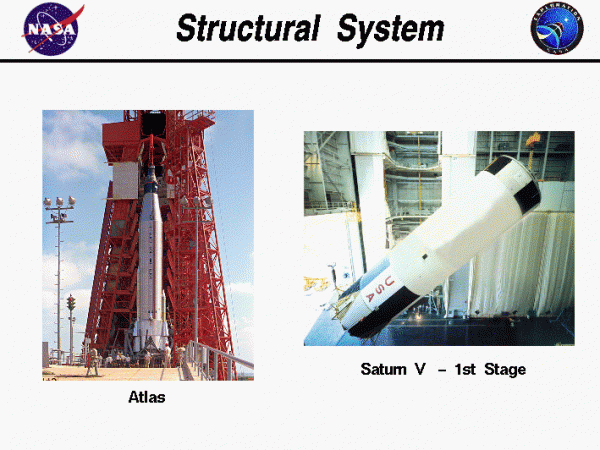Structural System

Structural System
There are four major components to any full scale rocket; the structural system, or frame, the payload system, the guidance system, and the propulsion system. The structural system of a rocket includes all of the parts which make up the frame of the rocket; the cylindrical body, the fairings, and any control fins. The function of the structural system is to transmit the loads from the forces generated during the flight and to provide low aerodynamic drag for flight through the atmosphere.
Performance of a Rocket
Rocket structures must be strong but light weight. The performance of the rocket depends directly on the weight of the structure. A variety of mass ratios are used to characterize the structural weight of a rocket. The distribution of the structural weight also affects the center of gravity of the rocket which, in turn, affects the stability and control of the rocket. During the flight of a rocket to orbit, some parts of the structure are discarded in a process called staging.
Atlas & Saturn V
On this page, we show a picture of an Atlas rocket at the left and a picture of the Saturn V first stage at the right. The Atlas rocket was developed in the late 1950’s as an intercontinental ballistic missile. Two sustainer rocket engines were discarded during the launch, but the entire central sustainer section went into orbit. The Saturn V was a three stage rocket that sent astronauts to the Moon in 1969. The first stage was 138 feet tall, 33 feet in diameter, and weighed 305,000 pounds empty. The stage was filled with 4.5 million pounds of propellants prior to launch. In the figure, the first stage is being lifted into the vertical launch position within the Vehicle Assembly Building (VAB) at the Kennedy Space Flight Center.
